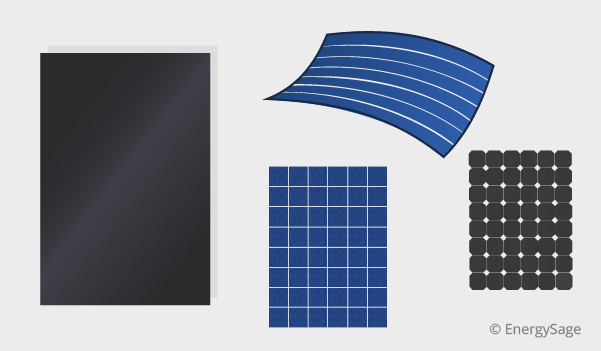Solar Systems for Dummies
Wiki Article
Things about Solar Systems
Table of ContentsThe 10-Minute Rule for Solar SystemsHow Solar Systems can Save You Time, Stress, and Money.The Single Strategy To Use For Solar SystemsThe Ultimate Guide To Solar Systems
There are 3 various kinds of solar panels: monocrystalline, polycrystalline, and also thin film. Monocrystalline solar panels are very reliable and also have a sleek layout, but come with a higher price point than other solar panels. Polycrystalline solar panels are cheaper than monocrystalline panels, however, they are less reliable and also aren't as visually pleasing.Nowadays, there are a number of ranges of monocrystalline photovoltaic panels on the marketplace to pick from. Passivated Emitter and also Back Call cells, even more commonly referred to as PERC cells, are ending up being a significantly prominent monocrystalline choice. PERC cells go via a various manufacturing and setting up procedure that raises the quantity of electrical power the cells can produce.
Because monocrystalline solar batteries are constructed from a single crystal of silicon, electrons are able to easily move throughout the cell, raising general effectiveness. Not only do monocrystalline panels have the highest possible effectiveness ratings, they normally likewise have the highest power ability scores. Many monocrystalline panels on the market today will certainly have a power result score of at the very least 320 watts, yet can increase to around 375 watts or greater!.
Since polycrystalline cells have several silicon cells, the electrons can not move as conveniently and also consequently, decrease the performance of the panel. The lower performance of polycrystalline panels additionally suggests they tend to have a reduced power outcome than monocrystalline panels, typically ranging in between 240 watts and 300 watts.
The Only Guide to Solar Systems
In order to fulfill your energy needs, you would certainly require to mount even more slim film panels over a huge location to generate the very same amount of power as crystalline silicon solar panels. This is why thin film solar panels don't truly make sense for domestic setups where space is limited.The temperature coefficient tells you just how much the power outcome will certainly decrease by for every 1 * C over 25 * C the panel gets. The conventional temperature coefficient for mono and polycrystalline panels commonly drops somewhere between -0.
In fact, with some thin movie panels, it's difficult to also see the private cells within the panel. They additionally tend to have much less electrical wiring and busbars, suggesting there's much less white area. Nevertheless, because they are so inefficient, you would need to cover your whole roofing in thin movie panels - which might or may not be your style.

Some producers have actually functioned around this with black packing or shaping the cells in different ways, yet these aesthetic modifications can influence both the cost and also performance of the panels. In general, monocrystalline panels still look streamlined, yet they're a little bit extra noticable than slim movie panels. solar systems. The process in which polycrystalline solar cells are manufactured triggers the cells to have a blue, marbled look.
The 9-Second Trick For Solar Systems
If you're on a tight budget, polycrystalline panels may make more feeling for you. We do not recommend thin movie photovoltaic panels for household setups - their performance and resilience do not make the affordable worth it, and also it's unlikely you'll have almost adequate space to mount the variety of thin film panels you would certainly need to cover your household electrical energy usage.Given that they are made from pure silicon, they can be conveniently recognized by their dark black shade. The usage of pure silicon likewise makes monocrystalline panels one of the most view it space-efficient and also longest-lasting among all three photovoltaic panel kinds. This comes at a price a lot of silicon is lost to create one monocrystalline cell, sometimes getting to over 50%. solar systems.

Amorphous silicon panels (A-Si) acquire their name from their unformed nature. Unlike mono-and polycrystalline solar cells, the silicon is not structured on the molecular level. Usually, an a-Si cell requires just a portion of the silicon needed to produce typical silicon cells. This allows them to have the most affordable production expense, at the expenditure of effectiveness.
What Does Solar Systems Do?
50 $0. 50 $0. 50 Note that these figures don't consist of the cost of setup and labor./types-of-solar-panels-pros-and-cons-5181546_finalcopy-93f1db65349840bdba2822f75fa592f9.jpg)
This indicates that thin-film panels can be an excellent option for hotter atmospheres or areas that experience more sunshine throughout the year. The upgraded International Building regulations of 2012 requires solar panels to match the fire view publisher site rating of the roof covering where they are installed. This is to guarantee that the components do not speed up the spread of flames in the event of a Get the facts fire.
Report this wiki page